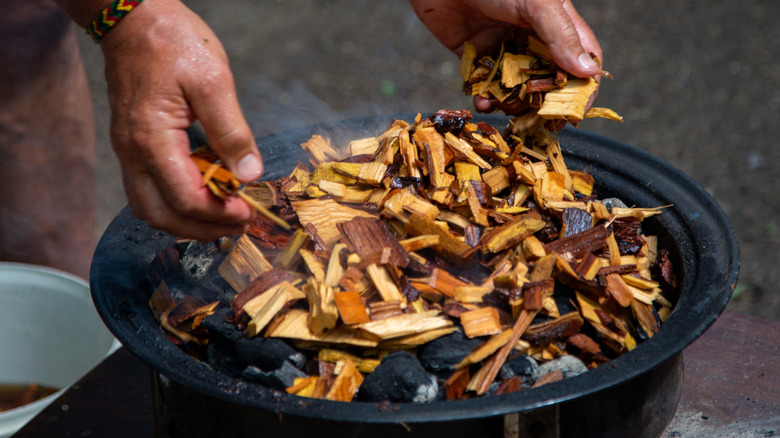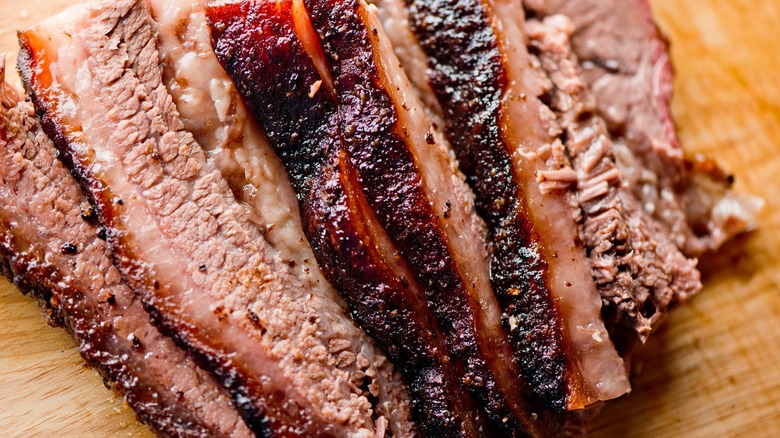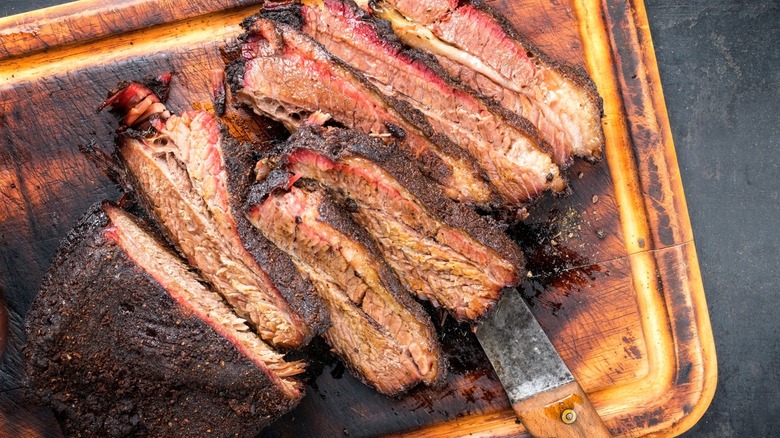The Flavor Profile Of Mesquite And What Beginners Should Pair It With
Smoking meats in barbecue-style cooking is one of the tried and true methods for enjoying a carnivorous meal. It's one of the oldest and arguably tastiest ways of preparing beef, pork, chicken, and other foods, dating back to pre-civilization and only rising in popularity since. There's a whole world of styles, cultures, and opinions on barbecue, but a healthy chunk of this discourse revolves around the type of wood that creates the actual smoke. Out of all these options, there's no variety that's as bold as the Texas staple known as mesquite.
Different cuts of meat call for different types of wood. While some milder options — like chicken, pork shoulder, or fish — pair well with hickory, maple, or applewood, beef will typically fare better with a stronger choice. Mesquite is the smokiest wood out of all the smoked woods, and its rich, earthy flavor will destroy anything that can't stand up to it. Luckily, mesquite and the always-classic beef brisket are the barbecue equivalent of peanut butter and jelly, a perfect pairing that allows the smokiness of the wood to shine through without overpowering the meat.
The intensity of mesquite wood
Barbecue woods don't just vary in flavor, they also burn at different rates. The intensity of mesquite is because it burns hotter and faster than other types of wood due to its high content of lignin, an organic plant component that makes wood combustible. This is also why mesquite releases the most smoke, and it's important to remember its ability to increase temperatures quickly and easily when smoking meats lowly and slowly.
Even though brisket and other red meat can usually stand up to mesquite, it nevertheless may be beneficial to use it as a baseline flavorer and let it burn away before adding a different, slower-burning wood like hickory to finish cooking, or just mix the two together. That way, the mesquite will sufficiently flavor the meat without drying out or overcooking your precious brisket. An ideal piece of mesquite-smoked meat will be both juicy and smoky with a characteristic red ring outlining the exterior portion of the cut right below the crust.
What else does mesquite pair with?
Although barbecue varies greatly between geographic regions, we have Central and West Texas to thank for mesquite and beef brisket. Although barbecue hot spots like Memphis, Kansas City, and the Carolinas emphasize pork, Texas' long and historical relationship with cattle ranching means that the cow reigns supreme instead. In addition, the arid Texas plains lack the humidity necessary to grow the types of trees that other regions use as smoking fuel. Mesquite trees, however, are native to these dryer biomes, leading to their bark becoming the staple wood for barbecue.
Beef isn't the only meat that works well with mesquite, either. Although it's much less common to see it as a choice on barbecue restaurant menus, the strong taste of lamb can also stand up to the equally intense aroma of mesquite (in smaller doses than beef). Chicken may not be able to handle mesquite, but duck is a heartier type of poultry and will fare better. Just keep in mind that you need a fraction of the amount as you would use for brisket.
Finally, if you're feeling even more adventurous (and you can get your hands on it), game meats like venison will survive a good mesquite smoking. Mesquite may not be the best choice for beginner barbecuers, but it's a rite of passage for burgeoning pitmasters to eventually sample the wood's earthy richness.



